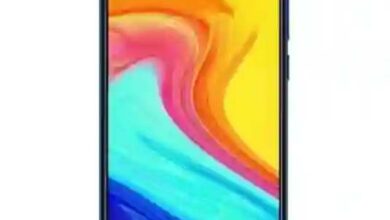Lenovo Phone Price In Nigeria
Lenovo Group Limited, often shortened to Lenovo, is a Chinese multinational technology company specializing in designing, manufacturing, and marketing consumer electronics, personal computers, software, business solutions, and related services.
Products manufactured by the company include desktop computers, laptops, tablet computers, smartphones, workstations, servers, supercomputers, electronic storage devices, IT management software, and smart televisions. The ThinkPad business line of laptops (which it purchased from IBM), the IdeaPad, Yoga, and Legion consumer line of laptops, and the IdeaCentre and ThinkCentre line of desktop computers are some of its most well-known brands.
According to unit sales, Lenovo is the biggest personal computer vendor in the globe as of 2021. On November 1st, 1984, a team of engineers headed by Liu Chuanzhi and Danny Lui established Lenovo in Beijing as Legend.
The business, which started out specializing in televisions, eventually shifted to producing and selling computers. In China, Lenovo rose to the top of the market and collected close to $30 million in an IPO on the Hong Kong Stock Exchange.
The most significant corporate acquisitions that Lenovo has made since the 1990s include buying and integrating the majority of IBM’s personal computer business, as well as its x86-based server business. Lenovo has also developed its own smartphone.
Lenovo has operations in over 60 nations and sells its products in around 180 countries. Its worldwide headquarters are in Beijing, and its operational hubs are in Singapore and Morrisville, North Carolina, in the United States.
Lenovo History
It was founded in Hong Kong. It has research facilities in Beijing, Chengdu, Morrisville, Singapore, Shanghai, Shenzhen, Yamato (Kanagawa Prefecture, Japan), and Beijing. It also has Lenovo NEC Holdings, a partnership with NEC that makes personal PCs for the Japanese market. On November 1, 1984, Liu Chuanzhi and his team of ten skilled engineers, working with Danny Lui, formally founded Lenovo in Beijing with 200,000 yuan.
On the same day, Lenovo’s establishment received approval from the Chinese government. One of Lenovo’s founders, Jia Xufu, stated that the first gathering to plan the company’s launch took place on October 17 of the same year. The complete original staff of eleven people came.
Each of the creators was a part of the Chinese Academy of Sciences’ Institute of Computing Technology. (CAS). Zeng Maochao gave his approval for the 200,000 yuan used as startup funding. The Chinese Academy of Sciences Computer Technology Research Institute New Technology Development Company was chosen as the name for the business at this gathering.
After the Chinese New Year in 1985, the company’s organizational structure was formed. It had departments for science, engineering, administration, and offices.
The group first tried to import televisions but failed. It reorganized as a business that tested laptops for quality. It also made an attempt to sell a digital watch but failed. Lenovo published its first job posting on the front page of the China Youth News in May 1988. At the time, China saw very few of these advertisements.
280 respondents were chosen out of 500 to complete a written employment exam. These 120 applicants underwent in-person interviews. 58 people received job offers even though interviewers originally only had the power to hire 16 people. There were three new hires without a college degree, 18 people with graduate degrees, and 37 people with bachelor degrees.
Among them was Yang Yuanqing, the present chairman and CEO of Lenovo. Liu Chuanzhi was given approval by the government to establish a company in Hong Kong and relocate there with five other workers. Liu’s father, who was already in Hong Kong with Lui, supported his son’s goals by providing loans and guidance.
In 1988, Liu relocated to Hong Kong. Liu and his coworkers chose to walk during this time because it was more cost-effective than using public transit. They held talks in hotel rooms to maintain the illusion. Just days after being approved by the exchange, Lenovo withdrew its application to list on the Shanghai Stock Exchange on October 8, 2021, citing the chance that the financial data in its prospectus might no longer be accurate.
Following the news, the price of the company’s shares on the Hong Kong Stock Exchange fell by more than 17%, marking the biggest intraday fall in more than a decade.
Lenovo Service and Their Products
Personal computers, smartphones, TVs, and wearable technology are all produced by Lenovo. The KT8920 mainframe computer and a circuit board that enabled IBM-compatible personal computers to process Chinese characters were some of the company’s first products.
The Tianxi (), which was introduced to the Chinese market in 1998, was one of its first computers. In 2000, it surpassed all previous records for computer sales in China. Along with the IdeaCentre and ThinkCentre brands of desktop computers, Lenovo also sells the ThinkPad, IdeaPad, Yoga, Legion, and Xiaoxin (; Chinese market only) lines of laptops.
Through the purchase of IBM’s personal computer division, including its ThinkPad and ThinkCentre lines, it experienced substantial growth in 2005. As of January 2013, shipments of computers bearing the THINK name have doubled since Lenovo acquired the company, and profit margins are reportedly above 5%.
In response to the rising popularity of mobile devices and the October 2012 release of Windows 8, Lenovo aggressively expanded the THINK brand away from traditional laptop computers in favor of tablets and hybrid devices like the ThinkPad Tablet 2, ThinkPad Yoga, ThinkPad 8, ThinkPad Helix, and ThinkPad Twist. With this high-value strategy, Lenovo saw considerable success, controlling more than 40% of the Windows computer market in the United States in 2013.
Lenovo Operations
With study centers in Beijing, Singapore, Morrisville, Shanghai, Shenzhen, Xiamen, Chengdu, Nanjing, Wuhan, and Yamato, Lenovo’s main locations are in Beijing, Singapore, and Morrisville, North Carolina, in the United States. (Kanagawa Prefecture, Japan). In addition to Japan, Lenovo has manufacturing sites in Chengdu and Hefei in China. In February 2013, a worldwide flagship store in Beijing measuring 700 square meters (7,500 square feet) opened.
The manufacturing processes used by Lenovo differ from the industry standard of outsourcing to contract makers. Instead of relying too heavily on original equipment makers, Lenovo prioritizes vertical integration to cut costs. Yang Yuanqing said this when discussing the subject: “Selling PCs is like selling fresh produce.
Innovation moves very quickly, so you need to know how to stay up, manage inventory, balance supply and demand, and deal with extremely quick turnover. After a meeting in 2009 where CEO Yang Yuanqing and the head of Lenovo’s supply chain discussed the costs and advantages of in-house manufacturing, they decided to make at least 50% of Lenovo’s manufacturing in-house.
This is when Lenovo started to stress vertical integration. According to George He, chief technology officer at Lenovo, vertical integration is crucial for product creation. According to him, the majority of innovations for PCs, cellphones, tablets, and smart TVs relate to the development of important components, such as the display, battery, and storage. Differentiating between essential components is crucial.
Reference: Lenovo History Wikipedia
-
Mobile Phone Price Review In Nigeria

Lenovo A7 Specifications and Price In Nigeria
Lenovo A7 smartphone features a 6.09-inch IPS LCD panel display with a screen resolution of 720 x 1560 pixels and…
Read More »
